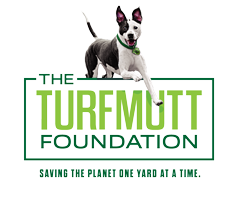Latest Posts
- Have a purpose when backyardingAugust 5 2021
- Study: Time outside alters our microbiomeAugust 4 2021
- Happy National Mutt Day from Mo-MoJuly 27 2021
- New home? Avoid these common mistakes in your yard.July 26 2021
- Infographic: Plan a backyard staycation this summerJuly 22 2021
Categories
Archive
December 20th
How different generations value the family yard

Multi Generation Family On Countryside Walk
Across the board, the majority of Americans – 86% according to a recent Harris poll for the Outdoor Power Equipment Institute (OPEI) – say it’s important to have a living landscape and grass around their living spaces. But did you know that various generations view and value the family yard differently?
Boomers (1946-1964)
You may think Baby Boomers are all about downsizing, but not necessarily. Research by Demand Institute found that as many as 46% of Boomer buyers were looking for larger, more expensive homes than they currently own. Boomers are looking for connectedness – an emotional bonding – to their home. The outdoor living room is a space that can help them enjoy life with their children and grandchildren. Additionally, Boomers are concerned about health and vitality, so the health benefits of spending time in the family yard – from improved memory to lower stress and better heart health – are important to this generation.
Gen X (1965-1976)
Gen Xers are the most likely to purchase a multi-generational home. They are Earth-loving, conscientious foodies who appreciate getting their hands dirty outside and in their kitchens. For this age group, the backyard is a place to cultivate sustainability by growing a garden. Gen Xers also appreciate the many environmental benefits of the living landscape, which reduces heat (and heating bills), captures and filters rainwater, reduces dust and particulate matter, produces oxygen, absorbs carbon, and more. Find even more environmental benefits by reviewing the Living Landscapes Fact Book.
Millennials/Gen Y (1977-1995)
Millennials, who make up the largest share of home buyers, are pet owners who see animals as friends and pets as family. This group really values a backyard since they need outdoor space to accommodate their pets and growing families. Research shows kids and pets are happier and healthier when they have access to green space. Contrary to popular belief, sturdy grass species can take the pounding and activity of an active pup. Natural grass is also cooler and less irritating to sensitive paws and little feet than artificial turf. Plants placed close together help designate areas that are off-limits to the dog.
Gen Z (1996-Present)
Gen Z, which is just starting to get interested in owning a home, has an affinity for technology and diversity. An activist generation, they value individuality and experiences over objects. A survey by Homes.com indicates that the majority of Gen Zers (86%) want to own rather than to rent, and they want to buy a home before they turn 30. Reporting higher levels of stress and anxiety than other generations, this group should remember the well-being benefits of the family yard. Gen Zers will also particularly love the rise in robotic outdoor power equipment (think of a Roomba for your grass) that can be monitored and managed on a smartphone.
Familiarize yourself with additional health and well-being stats by reviewing OPEI’s Living Landscapes Fact Book, and check out www.SaveLivingLandscapes.com for more information.





